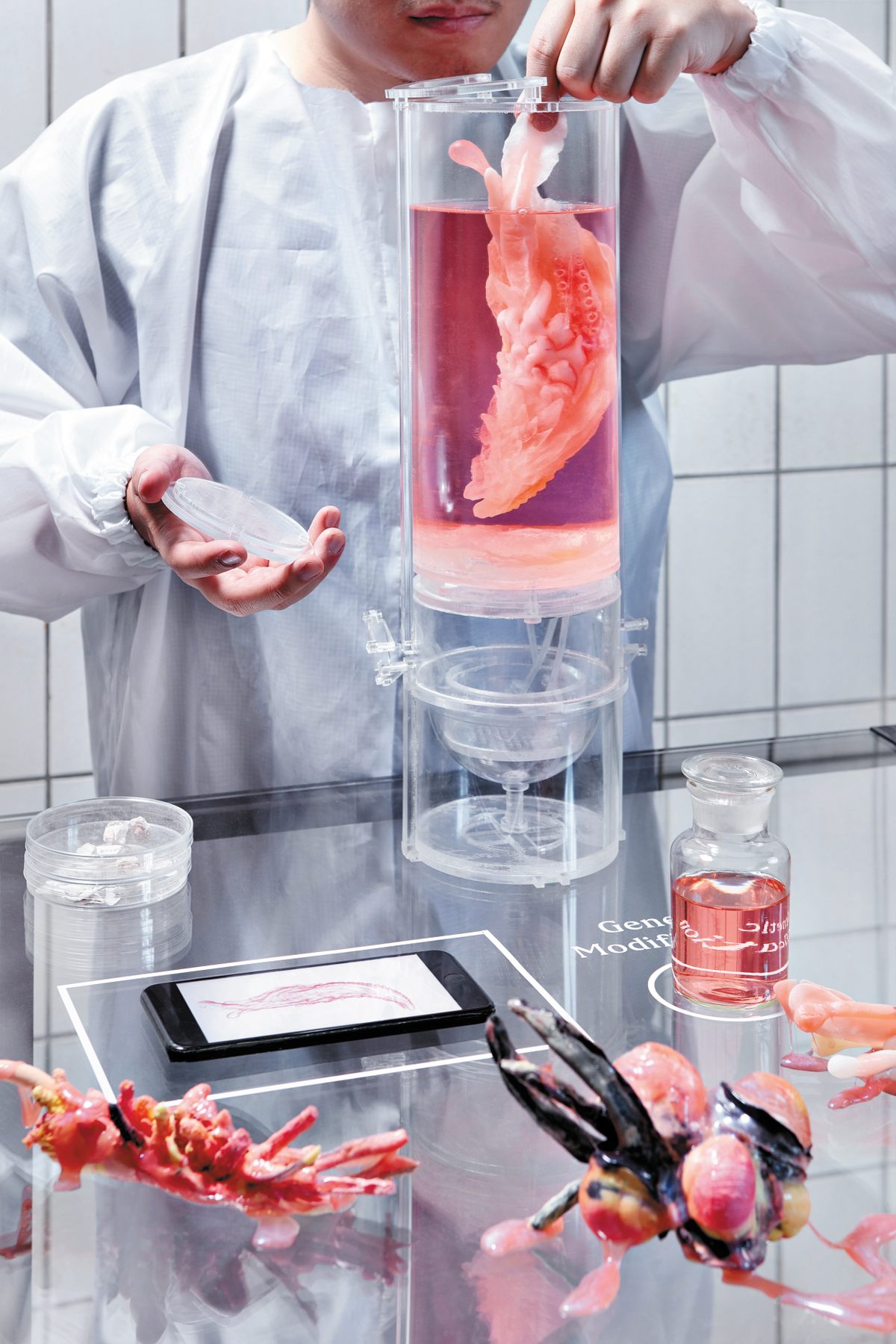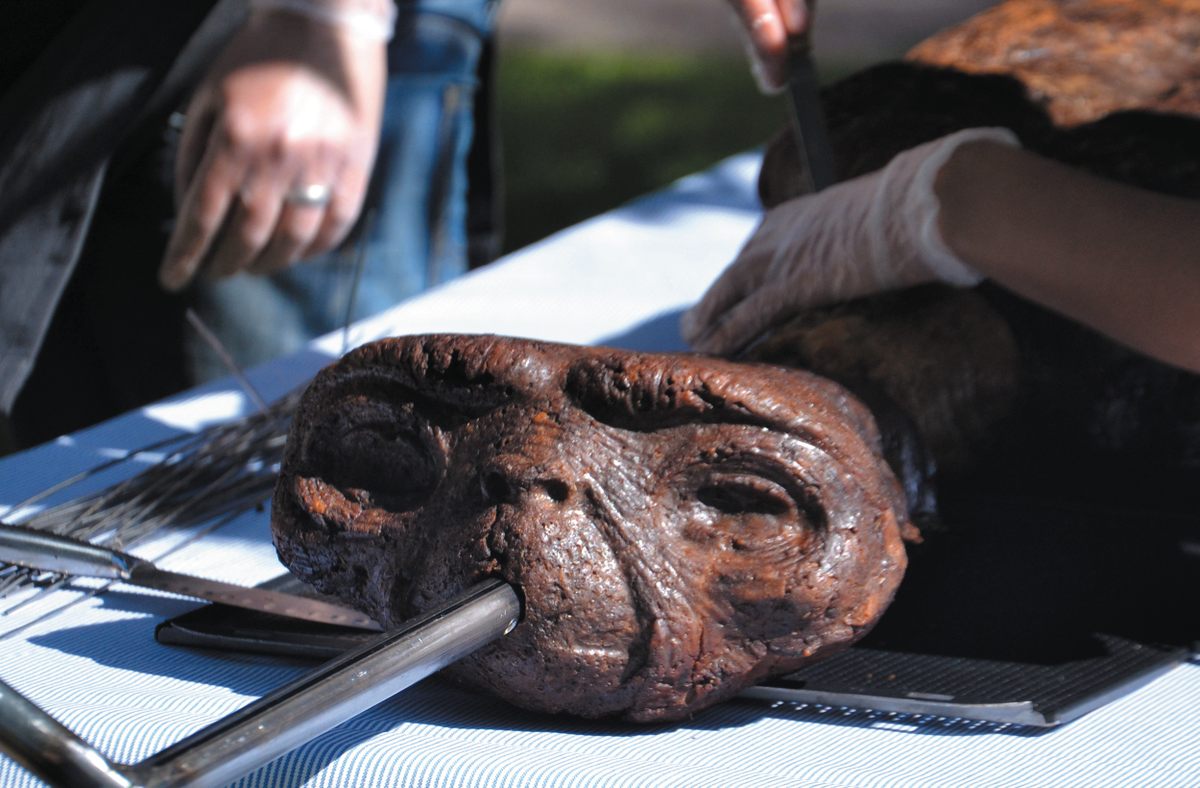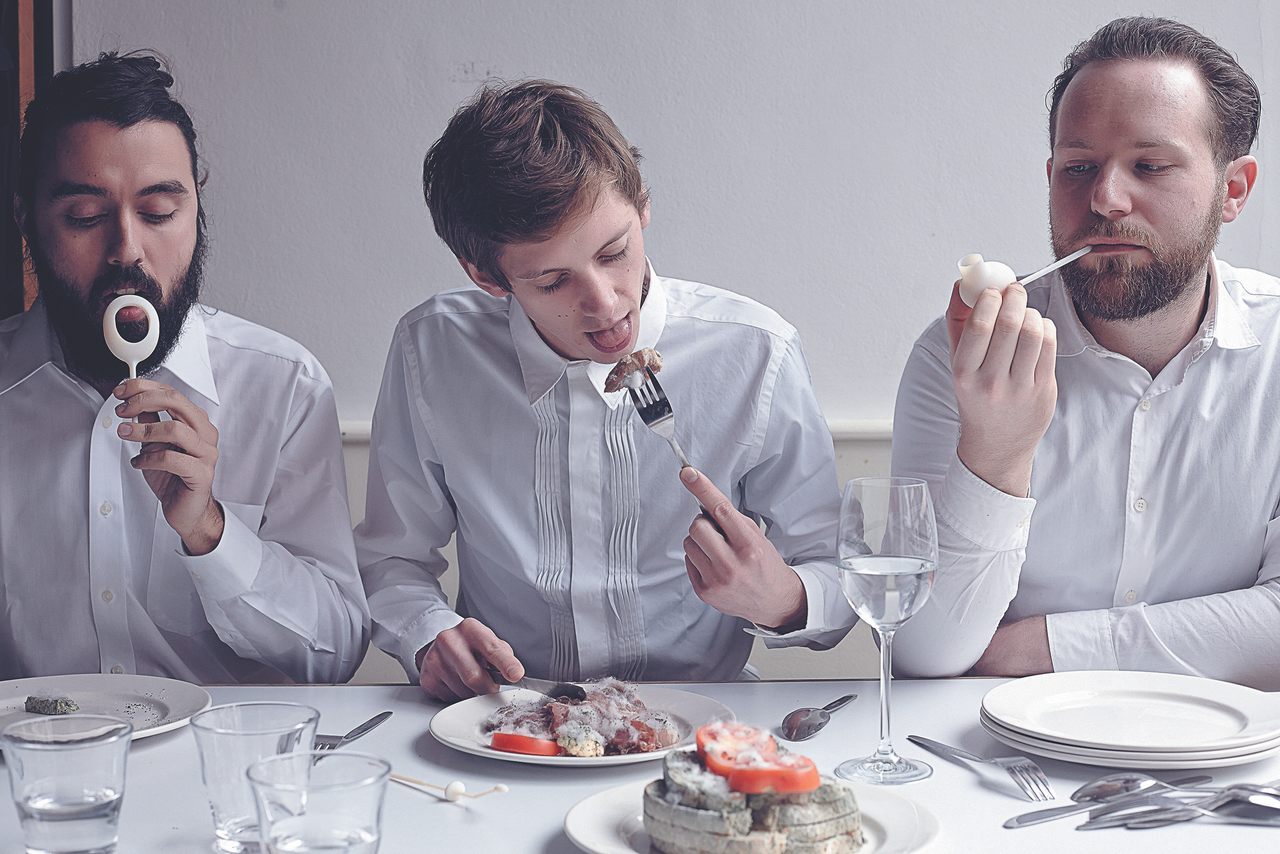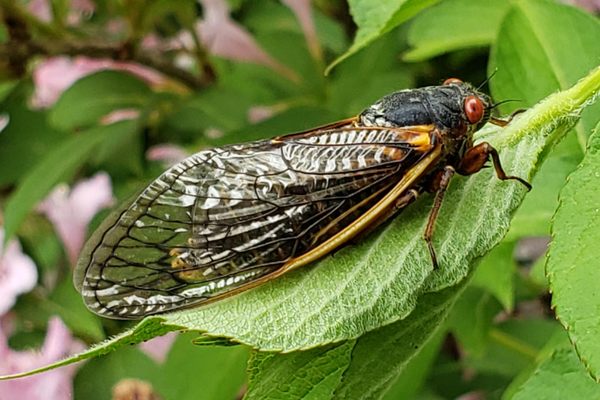A Cookbook for Surviving the End of the World
Fancy a spit-roasted roasted alien? Urine whiskey? A deep-fried Game Boy?
The sun is barely visible in the soot-filled sky; for thousands of miles in every direction, the air is gray and unseasonably cold. Crops are dying en masse, and an age-old question arises: “What will we eat?” If humans are faced with a volcanic winter (an eruption-induced catastrophe that scientists say has a one in six chance of occurring in the next century) or a nuclear winter (its manmade cousin), feeding ourselves will be no easy task.
One possible solution, according to the artist Paul Gong, is to eat garbage. In the imagined world of his Human Hyena project, resourceful humans could transform the taste and smell of spoiled food with a magnifying glass–shaped “Taste Transformer” utensil made from Synsepalum dulcificum (the so-called miracle berry that makes sour foods taste sweet) while inhaling stomach bacteria from hyenas that would allow them to successfully digest putrid food.

This may sound like a meal out of a sci-fi novel, but the culinary world has followed art’s lead in the past, and could stand to be inspired by its creativity in the future. At least, that’s the contention of The Anthropocene Cookbook: Recipes and Opportunities for Future Catastrophes, a recently published book of photos and essays that features the Human Hyena and more than 60 other mind-bending ideas on how we as a species might feed ourselves as the temperature rises, forests burn, and water and arable land become increasingly scarce.
“We cannot expect our future to materialize based on step-by-step instructions…[this] is a cookbook of ideas,” write the authors, Zane Cerpina and Stahl Stenslie—two Oslo-based curators with decades of experience making art about humanity’s future—in the book’s introduction. They aim to stretch readers’ imaginations with art and design projects ranging from bread raised with vaginal yeast to an imagined menu of extinct species, raised from the dead.

“The Anthropocene” refers to the age in which humans have reshaped Earth, and Cerpina and Stenslie believe that in order to face the challenges of this unstable era, we must “imagine the inconceivable, the unlikely, even the unwanted.” In Tiger Penis Project, artist Kuang Yi Ku and a group of bioengineers consider whether animal organs used in traditional Chinese medicine could be grown and 3-D printed in a lab to protect endangered species. It may sound far-fetched, but sometimes, Cerpina and Stenslie note, art precedes science: The one-centimeter steaks grown in the 2000 art project The Semi-Living Steak were the first pieces of meat grown from tissue cultures for human consumption.
Indeed, many of the futuristic works in the Anthropocene Cookbook are already realized, available for purchase, or to view in an exhibit. Consumers willing to eat insects—which Cerpina and Stahl write are a promising source of protein, with some caveats—can buy LIVIN Farms’ Hive, a countertop appliance with stacked trays for farming and breeding edible mealworms. In Gilpin Family Whiskey, artist James Gilpin actually distilled whiskey from diabetic patients’ high-sugar urine, suggesting a potential way to recycle water and carbohydrates in liquid waste. And Cobalt 60 Sauce is an actual barbeque sauce made up of five crops that have been modified through radiation.

On the other end of the spectrum, some of the book’s projects skew more toward thought-provoking science-fiction than practical application. The De-Extinction Deli imagines a menu of the meat of extinct animals, such as aurochs, ibexes, and passenger pigeons, that humans might someday resuscitate with biotechnology. In Eating E.T.: Mock Alien BBQ, a meal took aim at preconceived notions surrounding the food chain. The project, in which a group of artists roasted a life-size seitan replica of the film character E.T. on a spit and served it to diners in Lund, Sweden, raised questions about humans’ consumption of animals and whether or not aliens would have the right to eat us.
Even if some ideas aren’t feasible (for now), Cerpina and Stenslie don’t think humans should shy away from creative solutions to our food problems. To that end, they hope the book reaches as many eaters as possible, and fast. They began writing it six years ago, and since then, a host of catastrophes—COVID-19, massive forest fires, and wheat shortages caused by the war in Ukraine among them—have exacerbated their sense of urgency. But they remain optimistic. Even as things may seem to get worse, Cerpina says, “we are likely to thrive if our imagination is able to take the challenge.

Gastro Obscura covers the world’s most wondrous food and drink.
Sign up for our regular newsletter.














































Follow us on Twitter to get the latest on the world's hidden wonders.
Like us on Facebook to get the latest on the world's hidden wonders.
Follow us on Twitter Like us on Facebook